
Enter the surreal with The Tony Hancock Show
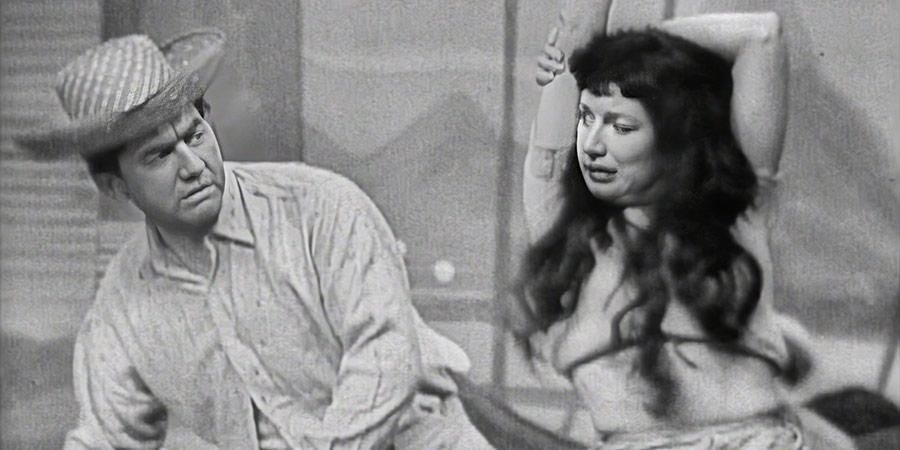
Tony Hancock is never described as a surreal comedian. His name just isn't associated with that style of comedy. Spike Milligan is rightly considered the Godfather of the sublime leading to the ridiculous, and Monty Python's Flying Circus is the series often credited with mass-popularising surreal humour as we know it today... but Tony Hancock is not.
Which is, actually, rather odd, because, he was, without a doubt, a surreal comic. Galton and Simpson's sensational scripts sparkled and played into his nature, but Hancock added many a surreal aside and impression: 'Left hand down' he can be heard declaring sporadically, offering no explanation as to what he actually means. Singing a random line from a song was another favourite of his: 'Someday I'll find you! Tah, tar tah, tar tah,' he once sung in the style of Noel Coward.
In the Hancock's Half Hour TV episode The Babysitters, left to his own devices, Hancock stared into a mirror, and in his best Churchillian voice declared: 'Some chicken! Some neck! Bahh!' This was a line from a 1941 Churchill speech, in which the PM had responded to the put-down from French Vichy Marshal Philippe Pétain: 'In three weeks England will have her neck wrung like a chicken.' But all that context had been removed, and even though the remark was probably slightly more familiar to audiences of the fifties than of today, the bizarre punchline still hung in all its baffling glory with the studio audience left tittering in sheer bemusement. This trick, to completely throw the audience for a loop with something utterly bizarre, was Hancock's underappreciated specialty.
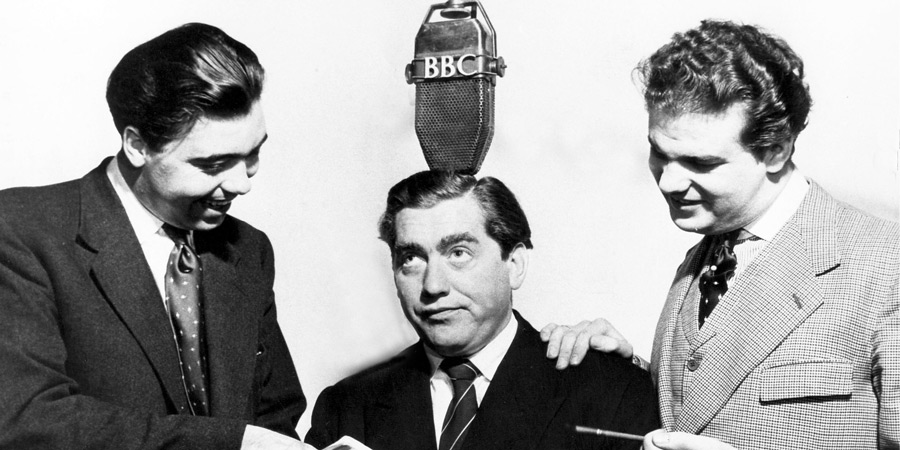
Queen Elizabeth II's first ever Royal Variety Performance (in 1952) saw a young Tony Hancock perform - we can imagine what sort of acts would have been on the bill: ventriloquists, magicians, comics with fairly safe and standard routines for the time; there would have been jokes with a set up and punch line. What did Hancock come out and do? He came out parodying a James FitzPatrick travelogue: 'Margate. Aww lovely, lovely Margate! The city of love and laughter,' he mused dreamily. 'Let us pause for a moment, and listen to the merry chatter of the natives on the beaches... Edith! Edith!' he suddenly bellows in the most common accent he can muster, 'Put that shark down! You don't know where it's been!'
Another aspect of Tony Hancock's comedy that goes undervalued is his work without the incredible writers, Galton and Simpson. Some critics have even gone as far as to say that Tony was nothing without them, but surviving series like The Tony Hancock Show illustrate that to be patently untrue.
Whilst he can be perceived negatively - and frequently, he is - what is often almost completely disregarded is that Tony Hancock suffered a long, painful battle with depression and alcoholism in a time when mental health and addiction was not understood. He was treated with extensive rounds of ECT (electroshock therapy, which in those days would have been extremely volatile). He was also given barbiturates, drugs that contributed to the deaths of many great icons, including Judy Garland, Jimi Hendrix, Marilyn Monroe and Tony's own co-star, Kenneth Williams.
Tony's downfall seemed to coincide with his split with Galton and Simpson, and he eventually lost his battle with addiction aged just 44. However, he had struggled with the pressures of performing throughout his life, many years prior to his television and radio debuts and decades before his infamous parting from the writing duo.
The Tony Hancock Show came relatively early in his rise to stardom. It was not only his first TV showcase, but his first major project away from his celebrated writers (due to contractual restraints, long before their split), and what it proves is that when Tony was in reasonable health he was great with any script that he was given. He was surreal, he was bonkers, he was innovative, and nowhere is that more clearly on display than here.
Believed to be the first sketch series ever made for British television that survives in its entirety in the archives, it was broadcast live in the spring of 1956, just a few months before Hancock's Half Hour made its much-anticipated debut on the small screen. As fans will know, the early TV versions of Hancock's Half Hour do not survive, and sadly nor does the second series of The Tony Hancock Show. The simple reason for this is that it was broadcast live. The BBC are particularly notorious for wiping tapes, but often, in those early days of television, there were no tapes to be wiped: a show was beamed directly into your living room, and then, like a play performed in a theatre, it was gone forever.
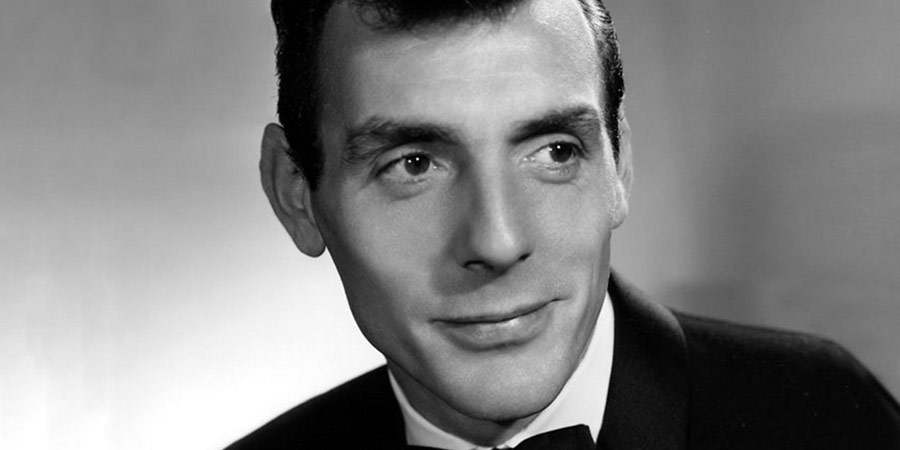
ITV had only just passed its six month birthday when The Tony Hancock Show debuted. Then broken into regional franchise broadcasters rather than being a single national channel as we know it today, the commissioning broadcaster - Associated-Rediffusion (ARTV) - and production company, Jack Hylton Productions, recorded and kept the series, despite it being similarly broadcast live. And finally, earlier this year (2022), Hancock's family allowed all six surviving programmes to be released on DVD.
It was a complicated contract dispute involving the BBC and impresario Jack Hylton (whom Tony was contracted to for his theatre work) that forced the production to furnish the radio star with writers other than Alan Simpson and Ray Galton for his new television sketch show. Enter Eric Sykes (pictured above, with Larry Stephens also contributing to the first two episodes). Sykes is another name very familiar to classic comedy fans: he is perhaps most famous for his self-titled sitcom with Hattie Jacques, but he also made significant contributions to The Goon Show, and it was this mad-cap style of writing paired up with Hancock's penchant for straight-faced, realistic depictions of the bizarre, that made for a truly ground-breaking mix.
We are first introduced to Tony's supporting cast via the novel concept of following him as he mingles with them at a cocktail party. The two main performers who supported Tony throughout this series were the future sitcom icons June Whitfield and Clive Dunn; but it is Whitfield who does most of the heavy lifting throughout the series. As well as playing opposite Tony in most sketches (they almost became a loose double act) one of her recurring roles was to sing a song - allowing the rest of the cast time to change costumes and get properly prepared for the next scene. It seems a bit odd nowadays, but this was commonplace in the early days of television and it made the whole experience feel more like a music hall variety show, the form of entertainment from which television entertainment grew out of, and with which audiences were still very familiar.
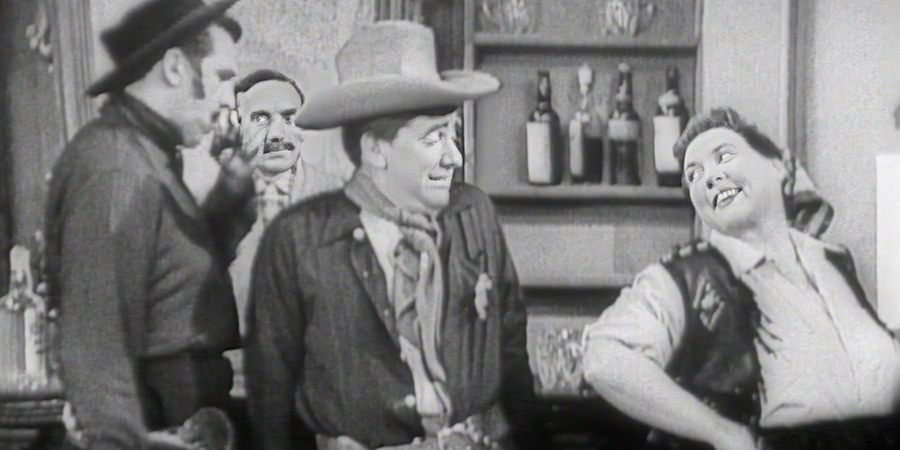
For June, there was nowhere to hide - this was literal decades before auto-tune. The entire show was live and the technology just wasn't there to allow anybody to mime. Yet throughout the entire series she was word and note perfect in whatever she was given to perform. It therefore stands just as much a showcase for her skills as it does for Tony's, and she shone: in fact, she was absolutely fabulous. The material never gave either of them an easy ride, demanding an eclectic mix of styles of the pair. The episodes see them try to turn their hand to almost everything, including an operatic musical, calypso dancing, Balinese dancing and Spanish dancing, to name but a few. For the time, it was a massive and expensive production, clearly designed to announce ITV - and specifically, ARTV - as a serious contender to the BBC, with a huge cast of dancers and an impressive looking costume department. They had clearly pulled out all the stops for Hancock's big debut.
The first proper sketch of the series was created by Tony himself. He would later recount:
The first sketch - I suggested it myself - was about a coffee bar with the plants gradually strangling all the guests and the espresso machine sinking through the floor. It is pretty difficult to get plants to strangle people. It needs about six months preparation really... the results were weird and hilarious, but in the wrong sort of way.
While the plant doesn't end up strangling everyone, it does start to grow uncontrollably when Tony feeds it. Clive Dunn is sitting at the counter, having been repeatedly berated by Tony for wanting 'a cup of tea and a pie'. Tony is told that he must not, on any account, feed the plant. 'Don't give it any coffee?' Hancock replies mockingly, 'Don't be silly! I'm just about to give it its morning cappuccino!'. He casually throws a cup of coffee into the plant pot, leaving Dunn just a hair's breadth from declaring 'Don't panic! Don't panic!'. In fact, he exclaims: 'Ohhhh! That's the worst thing you could have done! I must warn those people, I must warn them!'
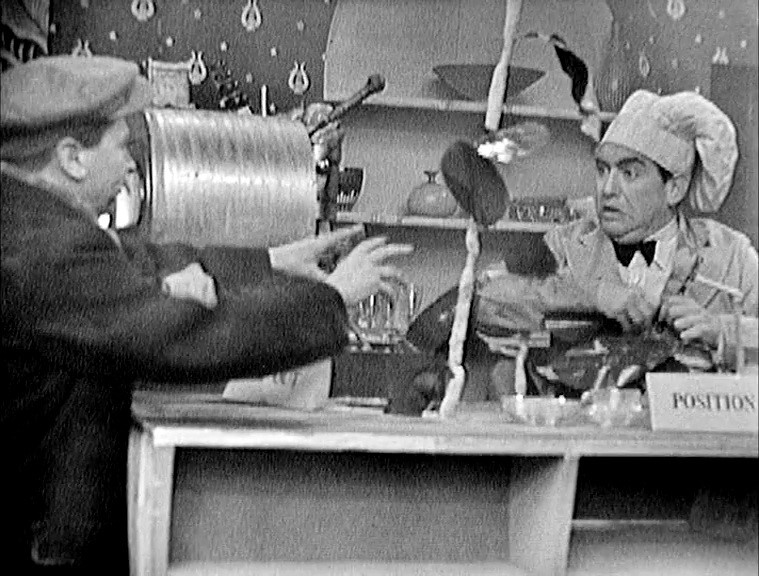
Sure enough, the plant begins to grow - putting a modern viewer in mind of something out of Little Shop Of Horrors. As Tony gets enveloped he cries, 'Don't leave me! Have a cup of tea and a pie!'. But it's too late: the somewhat lame-looking plastic plant continues to 'grow', and our star does his very best to convince us that he's being overpowered by its now beanstalk-like dimensions, wrapping the expanding mass of prop around himself.
'Jack!' he calls offstage (referring to producer Jack Hylton) 'You'd better get out on deck mate, the plant's run amok!'. Then, inexplicably, Tony goes back to the coffee machine and starts playing it as if it were a Wurlitzer cinema organ, 'And so ladies and gentlemen, you've been listening for the last fifteen minutes to... Reginald 'ancock of the Espresso Tooting,' he tells us as he and the machine begin an organ-like descent, before waving the viewer off into the ad break. How's that for an introduction?
So that's that over and done with you might think, yet the plant returns after the ad break, as a serious Dick Emery appears on screen to introduce the next sketch; the audience catch on as the plant slowly appears in shot before it takes hold of him 'Help!', he cries.
After all that, you'd half expect Graham Chapman to walk on set and warn the programme not to get silly again, or perhaps Michael Palin and co to run on and shout: 'Nobody expects the Spanish inquisition!' And this is what's so interesting about The Tony Hancock Show: it essentially offers us a style of comedy that many of us would not have believed had existed on television in the mid-fifties, having been fed decades of narrative that such surrealist extremes simply hadn't been invented until the Pythons came along thirteen years later. This sophisticated style of fourth wall breaking, and the self-awareness of the entire series - this would have been a real novelty.
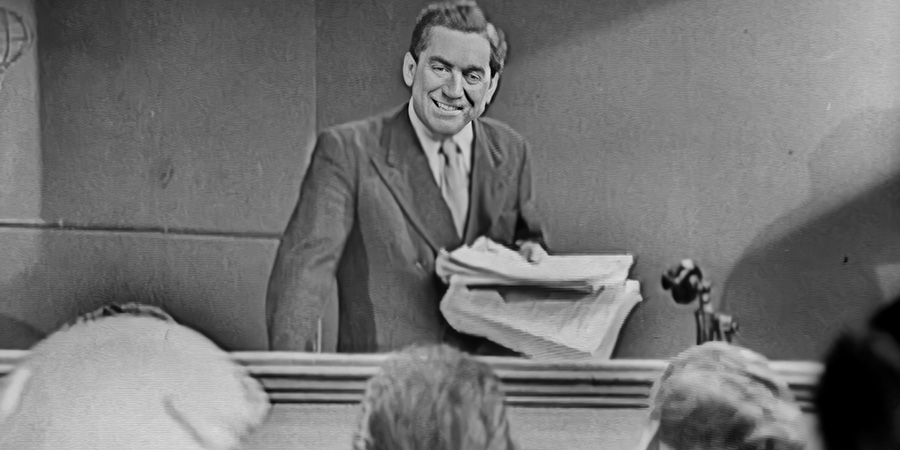
The sketch that Emery was introducing (before he was taken out by the plant) sees Tony and June parody A Streetcar Named Desire. June cries, 'Gee Brad!' as Tony stumbles around the room saying, 'Yeah, yeah sure,' doing his best/worst Marlon Brando impression. 'Show me the tattoo Brad!' she begs, unsure if it really is her husband returned to her after so many years apart. He pulls up his vest to reveal the word 'Aldershot' scrawled across his belly.
Again, this joke feels so modern, akin to the brand of absurd humour that we saw in the nineties in Vic Reeves Big Night Out or The Harry Hill Show, with running gags that bled from scene to scene and outright bizarreness delivered in an off-hand kind of way. Lots of comics were being silly on stage before this series of course (Tommy Cooper was a prime example, Spike another) but not quite like this.
Eric Sykes enjoys a cameo in a later episode, holding up a packet of: 'Smooth Chops! The Wonder Shaving Cream!'. This nonsensical advert interjects in a courtroom sketch - which appears to be the warm-up for the quintessential Hancock's Half Hour episode, Twelve Angry Men. "The quality of mercy is not strained! It dropeth... It drop... and so forth," Tony pleads with us - not quite reaching the Magna Carta line, not just yet.

In hindsight, many ideas appear to have been taken from this series and expanded upon in Hancock's Half Hour, including the introduction of Hattie Jacques to the radio series as Tony's secretary, Griselda Pugh. The only reason Hattie became involved with The Tony Hancock Show was due to June Whitfield's departure for an already belated honeymoon before recording had concluded. This was played for laughs, and linked into the series. In the penultimate episode, June keeps ruining each sketch by turning to the camera and saying things like: 'Don't worry, he's alright really, it's just a sketch'. Which causes Hancock to repeatedly run off in despair, attempting to throw himself off a bridge, believing that his show has been ruined, before he's convinced by passers-by that he's getting himself in a state over nothing, and in fact everyone thinks that he's doing well (a devastatingly accurate assessment of Hancock's character from Sykes). In the next episode we find out that Tony has accidently sold June at auction whilst disposing of various other bits and pieces from the series, including the dancers and ARTV cameras.
The humour does feel a little of its time when Hancock starts auctioning off the dancing girls, but throughout the series, whenever something starts to show its age, it's almost immediately pulled back and instead becomes something delightfully silly - almost as if Sykes foresaw the cultural changes that would come, and was laying a delicious tease for us 21st Century viewers, pushing the line before demonstrating that, actually, this is all just nonsense even by contemporary standard. Indeed, when the sketch that follows descends into a farce, Hancock rounds up the entire cast and walks them back into the auction house to sell them all off. It's a great moment, and another that could be well at home in any episode of Monty Python's Flying Circus.
The final episode featuring Hattie in her place is based around an elaborate murder mystery, Death of a Duchess, featuring the great detective, Hercules Parrot. Tony would play a version of Hercules Parrot again in Hancock's Half Hour alongside Hattie, but, as with so many of that series' early TV episodes, it's sadly missing. So, this is a rare chance to see Tony's take on Poirot that was previously thought lost forever - although, weirdly he is dressed more like Sherlock Holmes. As with everything else in the series it's fantastically off-the-wall: an exchange of facial hair happens at the door with John Vere - Hercules Parrot only has half a beard and a moustache (don't look for an explanation, there isn't one). The gag about Clive Dunn's previous employment as head gardener was superbly understated. All in all, you can see why Galton and Simpson brought Hattie into Hancock's Half Hour on the basis of this entire sketch.

However, the stand out sketch of the series is a big musical routine. The episode opens on Tony auditioning people for his new operetta - think Morecambe and Wise's 'The Play What I Wrote'.
'Well, 'allo,' Tony says as he welcomes us back from the Ad break. 'I expect you're pretty excited, ehh? Well, it's not much to me after writing the words and music and doing the dances and making the costumes... well, you feel pretty sure you know. Actually, this is the seventh long-running musical I've put on in this theatre in the last four weeks.'
And so, the curtain opens on Love is Good by Anthony Hancock. A story of forbidden love between Anton and... Gladys. It is a parody of an operetta that looks so convincing it could fooled you into believing you are watching a real one. June Whitfield sings beautifully (as does Clive Dunn) and Tony proves that he, too, can sing, but overeggs it in that Vic and Bob, Mulligan and O'Hare, kind of way - to great comic affect.
As usual with Tony it's all in the facial expressions. A slight look to the side in exasperation when he's laughing merrily with June before their love duet, which mainly consists of the lyrics: 'I'll be here dear, while you're there dear, I'll be here dear, if you don't go away'. But he gradually grows tired of the song, as well as chasing June about while she sings. It's superbly performed, and as with most of Hancock's material, it has, almost unbelievably, barely dated at all. This sketch essentially paved the way for every daft Morecambe and Wise musical, and every Two Ronnies all-singing, all-dancing extravaganza that was to come.

Clive Dunn looked back on his time working on the series with great fondness: 'We had such terrific laughs together,' he reminisced. 'If he could have been bothered to, he could have danced. He could have been an amazingly funny dancer. He could have been the greatest revue artist ever, because he was physically so funny. His favourite programme was Come Dancing. He used to lie on his back on the floor and howl with mirth at all this swooping and gliding. He thought it was the funniest thing he had ever seen in his life.'
'Tony said to me, "You've got it made haven't you, Clive?"' I said, "Well, what do you mean?" He said, "Well, you get all these character parts and you don't have to worry. I envy you," he said. He didn't always like the responsibility of being the leading man, and it was a terrific pressure on him to do it.'
There is a real sadness that we don't have the second series of this wonderful sketch show, nor so many of the Hancock's Half Hour TV episodes that followed over on the BBC. But we mustn't lose sight of the fact that it really is little short of a miracle that anything from the era has survived. In one of the first ever TV sketch shows, we see Hancock at his most vibrant and daft.
'That first series was such fun,' June Whitfield remembered. 'All that chopping and changing and different costumes... I remember in one of the sketches, Tony was playing all the parts, it was in a very seedy restaurant, he was a waiter, he was the chef, and he had to keep changing because they kept calling back the chef once he'd been the waiter etc.' She laughed at the memory. 'It was extraordinary, but tremendous fun and we ended up doing an Apache dance together.'
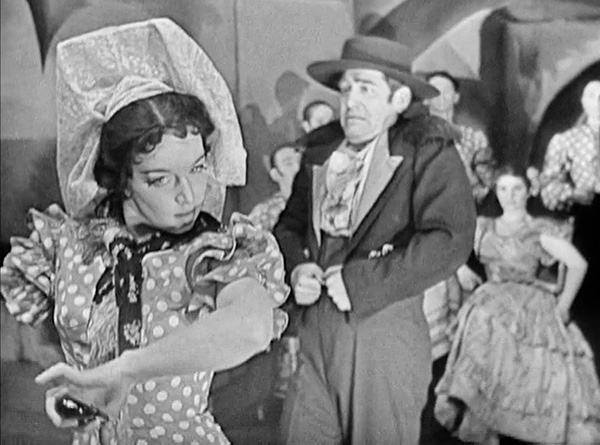
There is wonderful joy in seeing Tony dancing with June at the end of most episodes, and particularly in the first, in which Hancock starts to lose control of his castanets during a tango. June was an amazingly talented woman, yet despite her performance skills it has been said that she never strived towards leading roles in films or dramas that she was so clearly capable of: something that, later in life, she linked to the premature deaths of various comedians, citing "the responsibility, the stress and strain" of carrying their own shows. In the end, she cemented her position as a national treasure; one that essentially supported Tony throughout the highs and lows of his career, from his first UK TV series to his very last one.
For comedy fans The Tony Hancock Show is a rare treat that's not to be missed, showing a whole different side to the grandfather of modern British comedy.
Where to start?

Series 1, Episode 1
The first episode of this ground-breaking series is the place to start, featuring Tony's coffee bar, plants attacking the cast, June's dramatic interpretation of Blanche DuBois and the pair's sultry tango - which ends with Tony falling through a box. Splendid.
Help us publish more great content by becoming a BCG Supporter. You'll be backing our mission to champion, celebrate and promote British comedy in all its forms: past, present and future.
We understand times are tough, but if you believe in the power of laughter we'd be honoured to have you join us. Advertising doesn't cover our costs, so every single donation matters and is put to good use. Thank you.
Love comedy? Find out moreThe Tony Hancock Show

Tony Hancock stars in his first ever television series.
Co-starring June Whitfield, Dick Emery, Hattie Jacques and others, this sketch show enjoys scripts by Eric Sykes and Larry Stephens.
Two series were broadcast on the ITV network in 1956 and 1957, but now only the first is known to survive, and is presented here for the very first time.
First released: Sunday 13th February 2022
- Distributor: Kaleidoscope
- Region: 2
- Discs: 1
- Catalogue: KP1952
![]() Buy and sell old and new items
Buy and sell old and new items
Search for this product on eBay
BCG may earn commission on sales generated through the links above.

